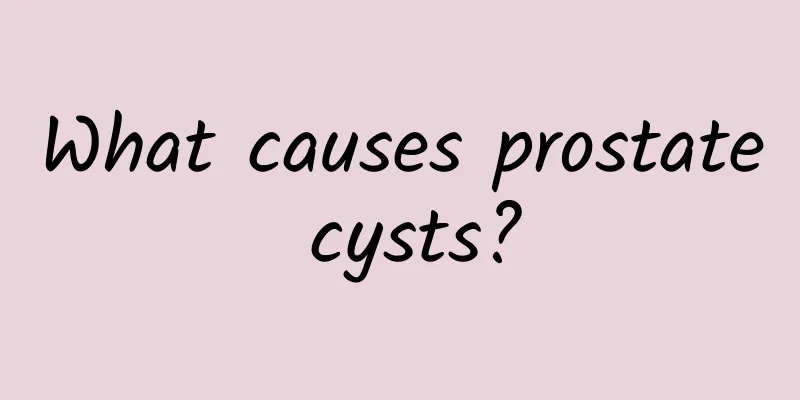What causes prostate cysts?

|
As we all know, the prostate gland controls the excretion of urine in our body. It is an indispensable and important organ in our male body. So if there is a problem like prostate cyst, is it very serious? Prostate cyst, how much do you know about this disease? If you don't know much about it, I think it is necessary to read this article. After all, it is one of the most important organs in the body. Prostatic cysts are cystic changes of the prostate gland due to congenital or acquired reasons. Congenital cysts are incomplete degeneration of the accessory renal ducts, which fuse in the midline and form a deep diverticulum or cyst under the bladder, opening behind the prostatic urethra. Acquired cysts are caused by incomplete or intermittent obstruction of the alveoli due to the tough prostatic stroma, which gradually thickens the alveolar epithelium and eventually leads to retention cysts. They can be located anywhere in the prostate or protrude to the bladder neck, with a diameter of 1 to 2 cm. Prostatic cysts may be complicated by infection and stones. Larger cysts may compress the urethra and cause dysuria. Common symptoms include urgency, frequency, strained urination, thin urine stream, and urine retention. Congenital prostatic cysts are often accompanied by congenital diseases such as hypospadias, cryptorchidism, and renal dysplasia. When the cyst is larger, rectal examination of the prostate can touch the cyst. Urethral angiography can show an arc-shaped pressure mark in the posterior urethra. Ultrasound and CT can clearly determine its location. Smaller cysts without symptoms do not need to be treated. Larger cysts or small cysts with symptoms can be treated surgically. There are reports of cyst puncture and aspiration through the perineum or rectum under B-ultrasound guidance, followed by injection of coagulant, but recurrence is common. Prostatic cysts are cystic changes in the gland due to congenital or acquired reasons, called prostatic cysts. The onset age of congenital prostatic cysts is 2 months to 75 years old. The cysts are often located above the prostate and on the midline behind the bladder. The size can be very large. The onset age of acquired prostatic cysts is 35 to 55 years old. The cysts can be located anywhere in the prostate or protrude to the neck of the bladder, with a diameter of 1 to 2 cm. The cysts contain clear mucus, but can also be dark brown or bloody. The cause of prostatic cysts is generally due to cystic changes in the prostatic gland due to congenital or acquired reasons. (1) True prostatic cyst: The prostate gland is obstructed during embryonic development, causing the prostatic duct to narrow and become blocked. The contents gradually accumulate and form a retention prostatic cyst. (2) Congenital cysts: They are caused by abnormal development of the mesonephric duct and paramesonephric duct, which results in partial expansion of the lumen and formation of cysts. Cysts arising from the paramesonephric duct are often located in the middle of the posterior prostate, while cysts arising from the mesonephric duct are located on both sides. This type of cyst does not actually originate from the prostate and is often adhered to the posterior wall of the bladder. It can often grow to a large size, compressing the bladder neck and causing dysuria; compressing the rectum and causing anal distension and difficulty in defecation. Congenital prostatic cysts are often accompanied by congenital diseases such as hypospadias, cryptorchidism, and renal dysplasia. (3) Acquired cysts: They are caused by the tough prostate stroma, which leads to incomplete or intermittent obstruction of the alveoli, gradually thickening the alveolar epithelium and eventually causing retention cysts. They can be located anywhere in the prostate or protrude to the bladder neck, with a diameter of 1-2 cm. (4) Inflammatory cyst: Chronic prostatic inflammation causes connective tissue hyperplasia, leading to narrowing of the prostatic ducts and retention of secretions to form cysts. (5) Parasitic cysts: caused by parasites such as hydatid cysts, which can cause chronic inflammation in the prostate duct and surrounding areas, or granulation hyperplasia, gradually forming cysts. If you or your family and friends have such problems, you might as well recommend this article to them. Many people do not have a correct understanding of this disease and blindly think that it is very serious. In fact, it is not the case. When facing illness, we should have a serious and scientific attitude and strive for a speedy recovery. |
<<: What to do if you have bacterial infection of glans?
>>: Is male prostatitis contagious?
Recommend
Can men improve their sexual performance by eating carrots?
The health of the male reproductive system has a ...
A few tips to keep you away from alcohol allergy
Sometimes people have to drink alcohol during soc...
What are the reasons why boys don’t want to be in a relationship?
At present, there are more and more single people...
What are the dangers of long-term sitting for men?
We often sit in our daily life, whether at work o...
Symptoms of non-gonococcal chronic prostatitis
Non-gonococcal chronic prostatitis is mainly caus...
What are the benefits of drinking more water in the morning?
After a night of sleep, the human body usually fe...
What should men pay attention to before pregnancy?
For newly married couples, the next step is to pr...
What to do about male impotence and premature ejaculation
Impotence and premature ejaculation are common er...
There is a bulge below the Adam's apple.
With the professional knowledge of thyroid diseas...
Is it good to sleep naked in summer? What should you pay attention to?
In summer, due to the extremely hot weather, many...
Epididymal cyst for 20 years
Patients who have had epididymal cysts for 20 yea...
The small particles on the glans penis do not itch or hurt
If you feel that small particles have grown on yo...
What is the purple edge of the glans?
In our daily life, many diseases are caused by ou...
How to check men's sexual function
Male sexual function is an indispensable confiden...
Can more exercise treat prostate problems?
I believe that many male friends will use smoking...









